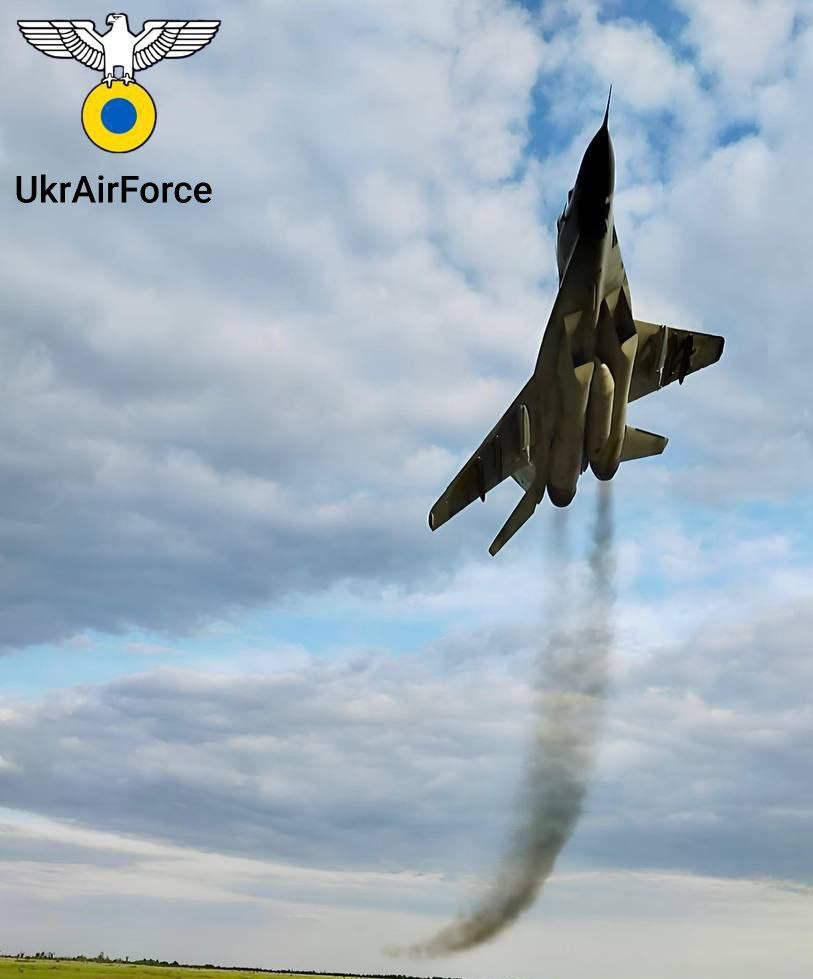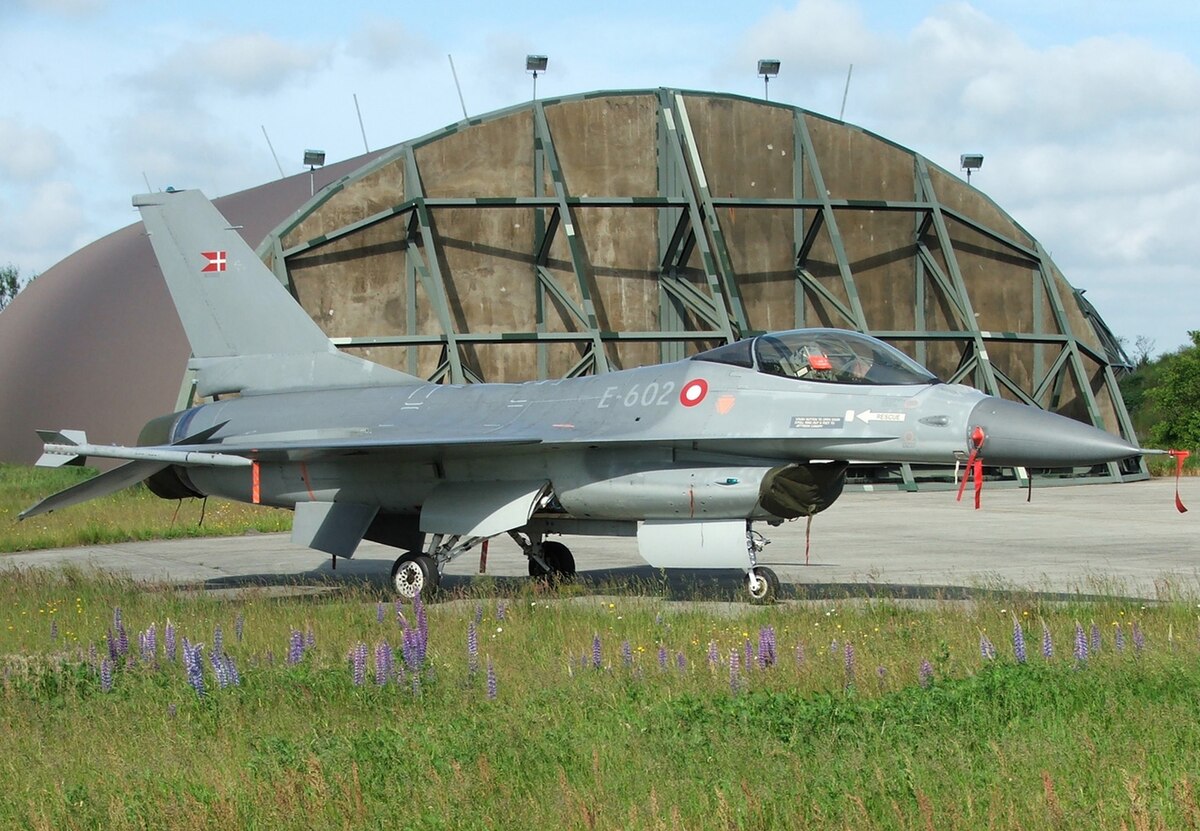As the Ukrainian Air Force awaits Dutch F-16 fighter jets to take on the Russian Air Force, a rare image of a Ukrainian MiG-29 equipped with ADM-160 Miniature Air-Launched Decoys (MALDs) has surfaced online.
According to publicly available information, the photograph below shows a low pass by a Ukrainian Air Force MiG-29 from the 114th Tactical Aviation Brigade. Under the wings of the aircraft, a US-supplied ADM-160 MALD (Miniature Air-Launched Decoy) can be seen.
Although these decoys have been used to deceive Russian air defense systems since 2023, this is the first time in over a year that a Ukrainian combat jet has been photographed with the ADM-160 MALD, and certainly, the first public disclosure of these decoys outfitted on the MiG-29 Fulcrum.
While the decoys were shipped to Ukraine in 2023, the Armed Forces of Ukraine (AFU) did not officially acknowledge the deliveries. It was only in May 2023 that the wreckage of one of these decoys was discovered in Luhansk, confirming its use by the AFU, as previously reported by EurAsian Times.
Following the discovery of its debris, observers and military experts began to speculate about the platform Kyiv would have used to launch the decoy. Some initially speculated it could be a MiG-29, which has also been combined with other American weapons systems, such as the Joint Direct Attack Munition-Extended range (JDAM-ER) smart bombs and the AGM-88 HARM. Some others believed that it could even be a Su-27.
The MALD is an autonomous, programmable flight system that can imitate US or allies’ aircraft to confuse enemy Integrated Air Defense Systems (IADS). Despite lacking an explosive warhead or attack capacity, it has incredible significance in an offensive role.

A former US Department of Defense (DoD) official, Trent Telenko, said: “The AGM-160B MALD is essentially a small cruise missile/glide bomb geared to jam radars, drop chaff, and re-radiate missile fire control signals to look like a larger aircraft. Its presence in Ukraine’s arsenal means a great deal.”
These MALDs are essentially miniature cruise missiles meant to trick opposing air defenses rather than kinetically engage them. They can interfere with enemy radars or trick their operators into thinking threats are approaching from different directions, frequently diverting the attention of defenders and resources away from genuine impending threats.
China ‘Dares’ F-22 Raptors With J-20 Deployment Near USAF Base; History Shows F-22s Are Not Invincible
There have been reports that Ukraine has used these decoys in tandem with the long-range Storm Shadow or SCLAP-EG missiles. The ADM-160 MALD can reach locations far beyond those of a Storm Shadow or SCALP-EG.
Moreover, they are a little under 300 pounds in weight and could be programmed to replicate different aircraft and missile radar signatures, thus deceiving Russian air defenses.
An Izvestia report claimed that the Russian military, on January 12, destroyed two ADM-160 MALD missiles. As per a previous EurAsian Times analysis, the MALD is likely fired first, followed by a MiG-29 or Su-27 aircraft firing the AGM-88 HARM. Then, the Su-24 Fencers fire the Storm Shadow. The plan is seen as taking the radar off first, then attacking land targets with Storm Shadows.
‘Toughest’ Missile To Intercept! Russian AD Crew Identify ‘Terrain-Hugging’ ALCM As Hardest To Hit
The “decoy” missile deploys folded wings. According to a RIA Novosti report, a GPS-enabled inertial navigation system (INS) keeps the MALD on the “programmed course.” The pilot can change it at any time, right up to launch.
Since a single MALD can cost up to $300,000, Ukraine only uses them in missions aimed at taking out high-value targets. It is, therefore, unusual for Russian anti-aircraft gunners to encounter MALD, and that is probably why there have been very few photographs of the MALD attached to an aircraft.
Since no weapon is visible on the aircraft’s pylon in the viral photograph, some observers said the fighter was likely returning from a sortie. EurAsian Times could not independently confirm any of these claims or hypotheses floating on social media.
The image, however, comes at a time when fighting has become intense between the two sides. Russia launched a fresh offensive against Ukraine earlier this month and has since regularly claimed making significant gains.
On his part, the Ukrainian President Volodymyr Zelensky is now calling for direct NATO involvement.
Zelensky Calls For Help!
As Russia continues to bombard Ukraine and push further with its ground operations, Ukraine’s President said, “Russians are using 300 planes on the territory of Ukraine. We need at least 120, 130 planes to resist in the sky.”

Ukraine anticipates acquiring F-16 fighter jets in the coming months. Emphasizing the urgent need to counter Russian fighter jets, the Ukrainian President said that NATO states could still use the planes to shoot down Russian missiles even if they were unable to immediately supply them with the promised F-16s.
The President announced that his country was in discussions with other countries about using its armed forces to attack Russian military equipment both inside and outside of Russia.
“So far, there is nothing positive,” he stated. Zelensky reaffirmed that he had not disregarded the promises made to his allies to not use their weapons inside Russia. “We can’t put the whole volume of weapons at risk.”
US Military Academy Releases New Report On Fighting Kamikaze Drones; Suggests 3 Ways To Counter UAVs
Zelensky declared that the situation on the battlefield was “one of the most difficult” since Russia launched the full-scale invasion of the country in February 2022. “A very powerful wave [of fighting] is going on in Donbas … No one even notices that there are more battles in the east of the country, specifically in the Donbas direction: Kurakhove, Pokrovsk, Chasiv Yar.”
However, he noted that the situation in Kharkiv was under control now after days of aggressive Russian operations.
- Contact the author at sakshi.tiwari9555 (at) gmail.com
- Follow EurAsian Times on Google News





